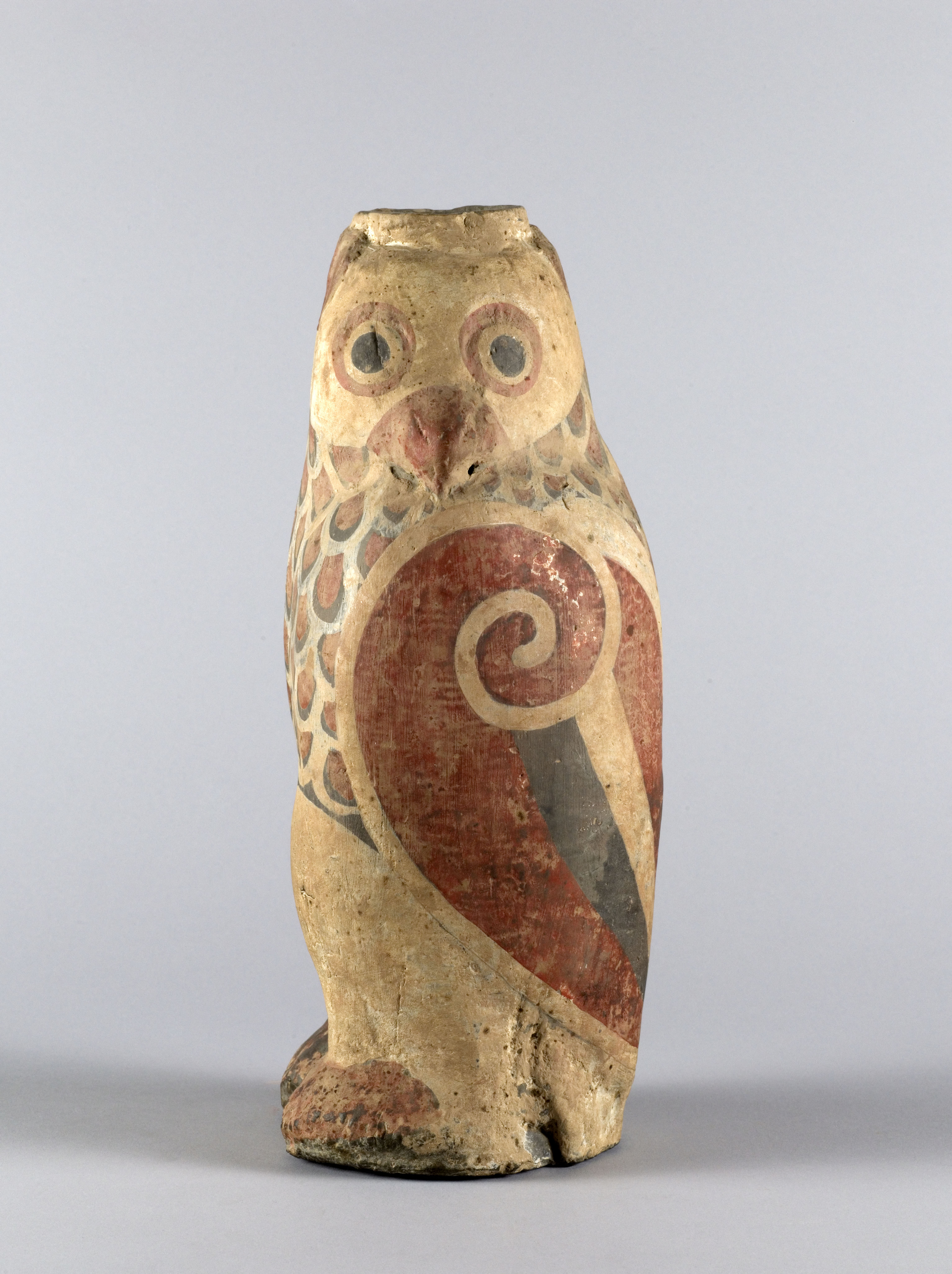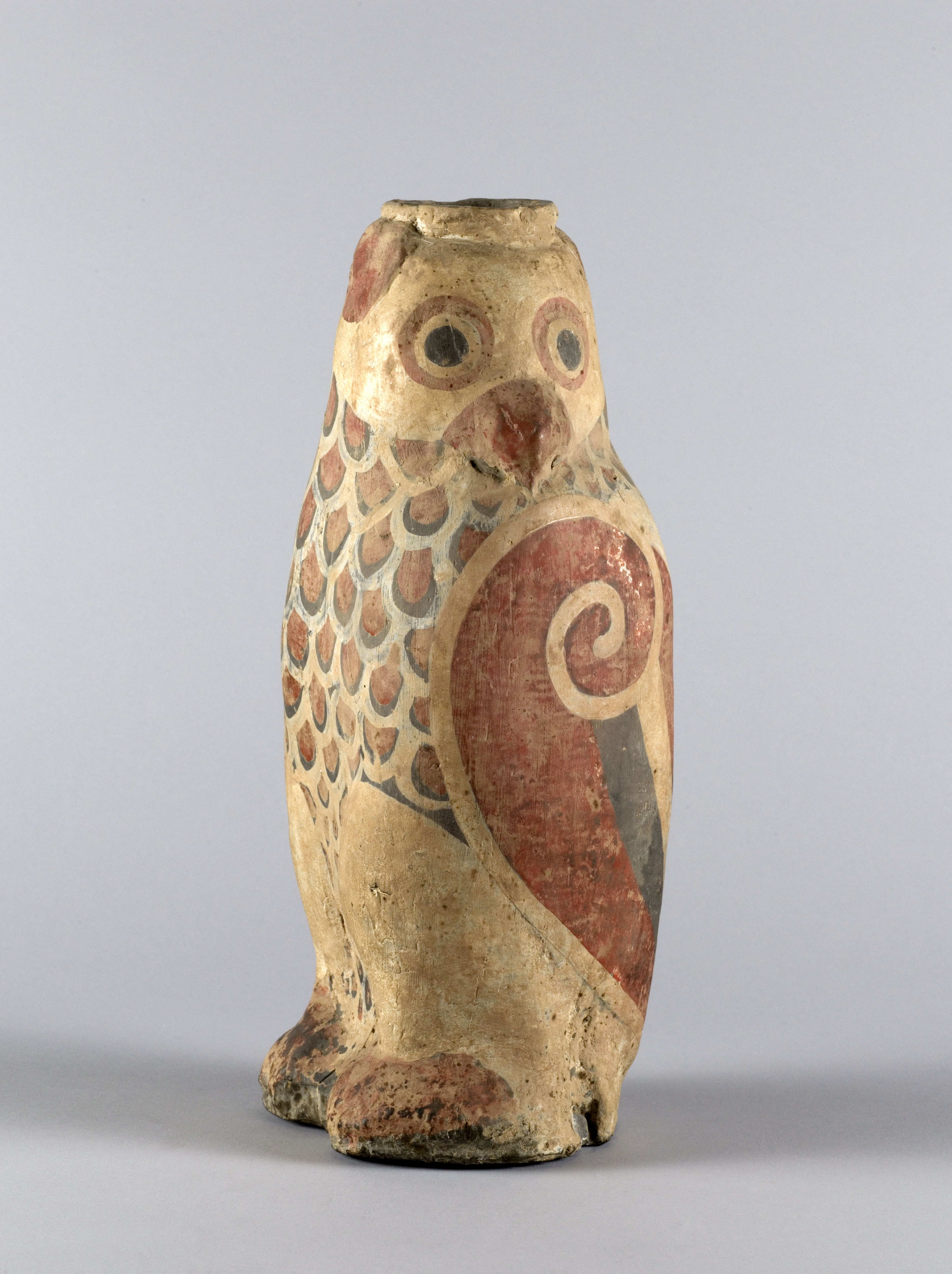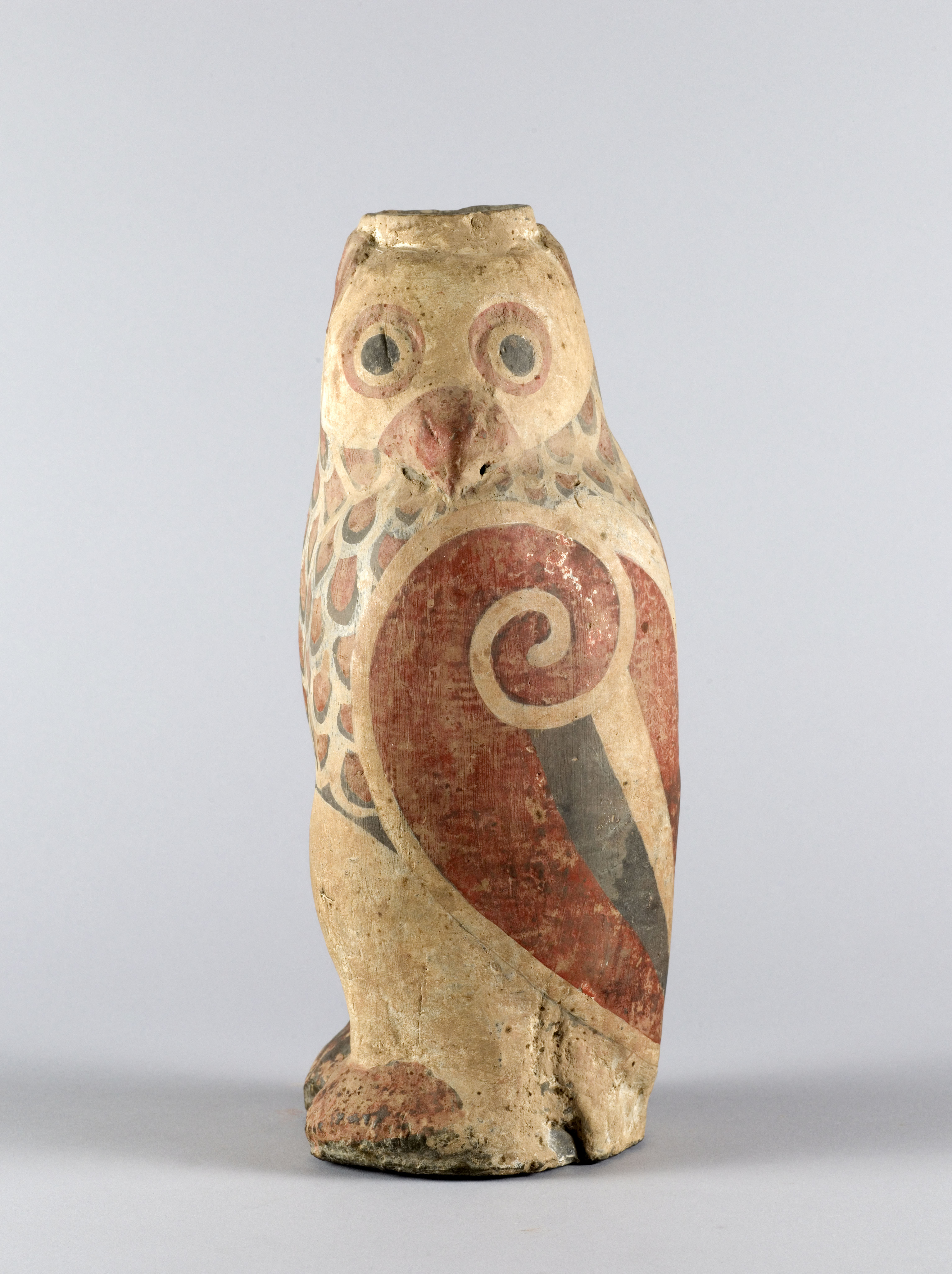
Hibou
Terre cuite, Moulage, Couleurs - Pigments
Statuette, Mingqi
Achat
M.C. 7372
This owl-shaped funerary substitute mimics a vessel used to contain fermented beverages. Several bronze vessels in the form of a bird (niaohouzun) dating from the Shang period (circa 1550 - circa 1050 BC) have been found in southern China, but these specimens are too old to establish a connection between these ancient vestiges and the Han period. With respect to this owl, Vadime and Danielle Elisseeff have referred to ancient fertility rites during which an owl-shaped goatskin filled with blood was pierced.
In the Han period, this type of vessel may have contained medicine. Owl-shaped vessels were common at the time. Generally, the figure’s removable head formed the stopper; here, the vessel opens at the top of the head. But this unusual feature does not correspond to a particular chronological evolution.
In its expressiveness achieved simply through the play of colours, the Cernuschi Museum owl constitutes one of the ceramic masterpieces from the Han dynasty.
Danielle et Vadime Elisseeff, La Civilisation de la Chine classique, Paris, Arthaud, 1979.

